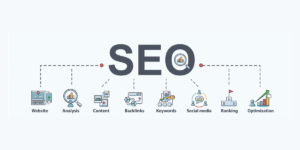
HTML, or HyperText Markup Language, is the cornerstone of the World Wide Web. It serves as the standard markup language for creating web pages and web applications. In this article, we’ll delve into the fascinating history of HTML, tracing its evolution from humble beginnings to its pivotal role in shaping the modern internet landscape.
The Genesis Of HTML
HTML was first conceived by Sir Tim Berners-Lee, a British computer scientist, in 1989 while working at CERN, the European Organization for Nuclear Research. Berners-Lee envisioned a system for sharing and accessing information across the organization’s network of computers. This led to the creation of the first web browser, WorldWideWeb (later renamed Nexus), and the development of HTML as a markup language to structure and link documents on the web.
HTML 1.0 – The Birth Of A Standard
In 1993, the World Wide Web Consortium (W3C) was established to standardize the protocols and technologies of the web. HTML 1.0 was officially released as a W3C recommendation in 1995, marking the beginning of a new era for the web. This initial version of HTML provided basic structural elements such as headings, paragraphs, lists, and links, laying the foundation for future iterations of the language.
The Rise Of HTML4 And XHTML
Throughout the late 1990s and early 2000s, HTML underwent significant updates and enhancements with the release of HTML4 and XHTML. HTML4 introduced new features such as tables, forms, and frames, enabling developers to create more dynamic and interactive web pages. Meanwhile, XHTML (eXtensible HyperText Markup Language) aimed to reformulate HTML as an XML application, adhering to stricter syntax rules and promoting greater compatibility with other web technologies.
HTML5 – A Modern Renaissance
In 2014, HTML5 was officially standardized by the W3C, ushering in a new era of web development. HTML5 introduced a plethora of groundbreaking features and capabilities, including native support for multimedia elements (such as audio and video), canvas for drawing graphics, and the ability to create more semantically meaningful markup with new structural elements like <header>, <footer>, and <nav>. Additionally, HTML5 brought enhancements to forms, accessibility, and offline web applications, making it the most versatile and powerful version of HTML to date.
The Significance Of HTML
HTML has become synonymous with the internet itself, serving as the backbone of virtually every web page and application. Its simplicity, versatility, and cross-platform compatibility have made it the lingua franca of the web, enabling developers to create rich and immersive online experiences across a wide range of devices and browsers.
Moreover, HTML’s open and accessible nature has democratized access to information and empowered individuals and organizations to share knowledge, connect with audiences, and transact business on a global scale. From personal blogs to e-commerce platforms to social media networks, HTML underpins the infrastructure that defines modern society.
The Future Of HTML
As technology continues to evolve, HTML will undoubtedly evolve along with it. The W3C is actively working on the next iteration of HTML, known as HTML.next, which aims to address emerging trends and challenges in web development, such as the rise of mobile computing, the proliferation of IoT devices, and the increasing demand for immersive multimedia experiences.
HTML stands as a testament to the power of human ingenuity and collaboration. From its humble origins as a simple markup language to its current status as the backbone of the web, HTML has played a pivotal role in shaping the world we inhabit today. As we look to the future, HTML will continue to evolve and adapt, ensuring that the web remains a vibrant and accessible platform for innovation and creativity.

My name is Greg and I have 20 years of experience in creating and managing websites. I have 6+ million views collectively on social media platforms like Quora, Facebook, LinkedIn, and Instagram. Contact me to get your website optimized for search engines.












